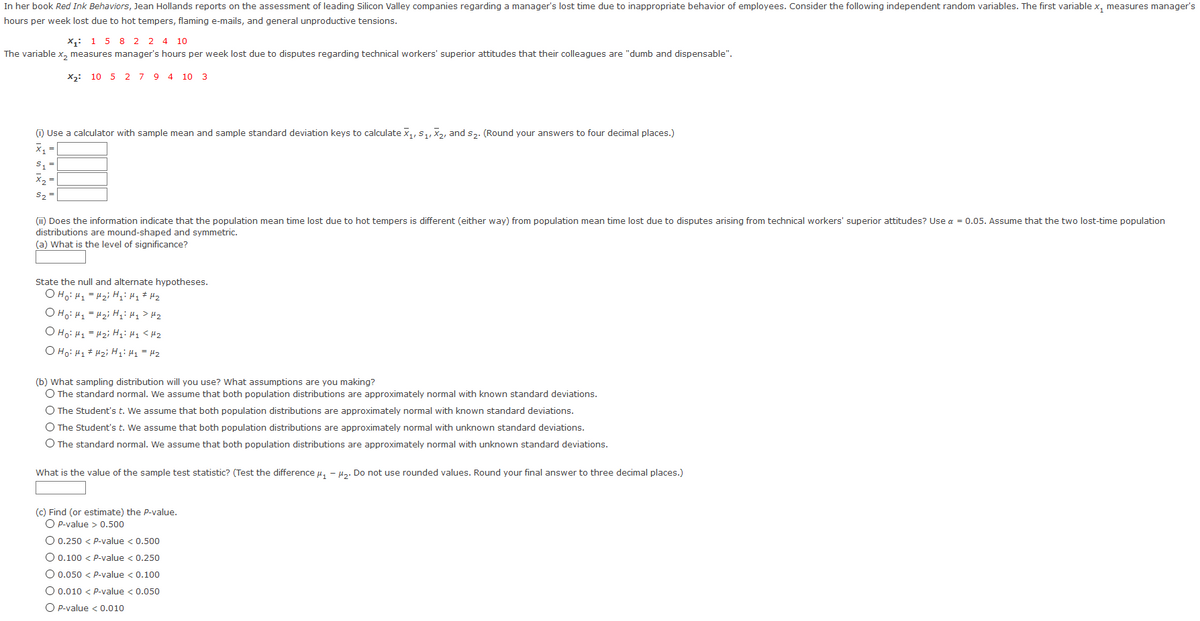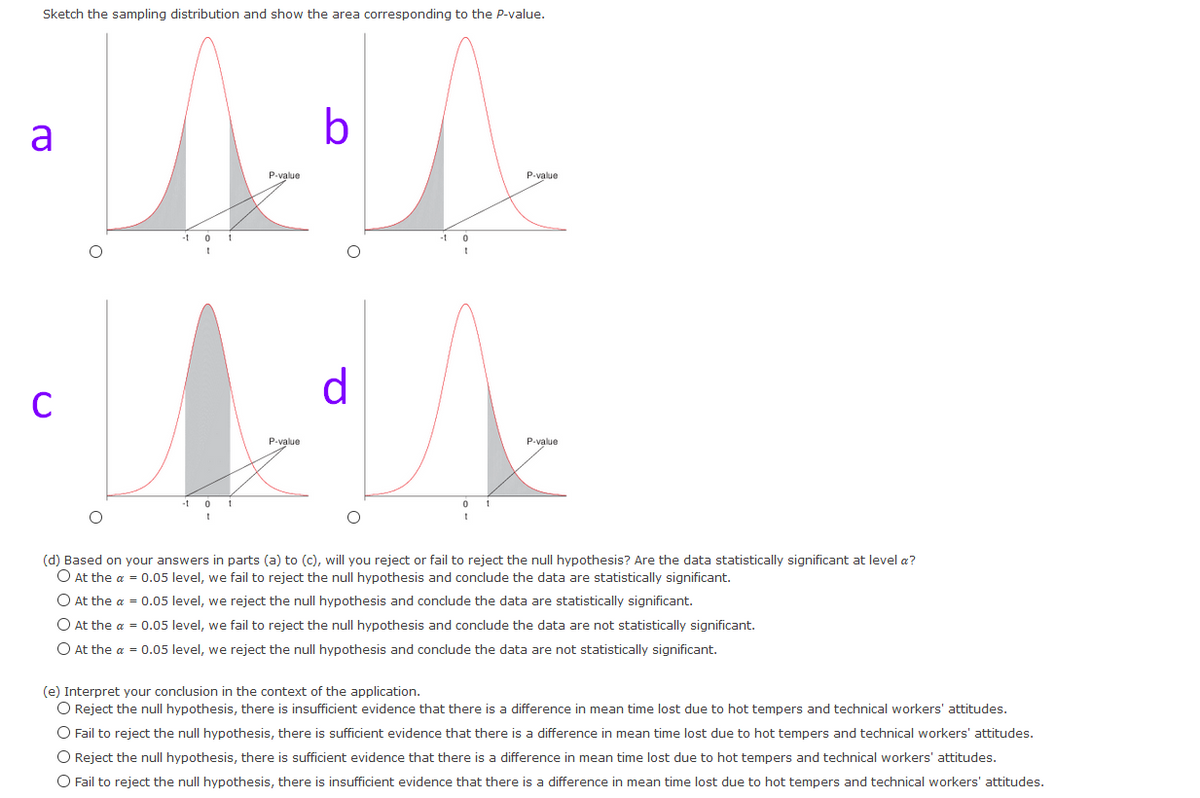In her book Red Ink Behaviors, Jean Hollands reports on the assessment of leading Silicon Valley companies regarding a manager's lost time due to inappropriate behavior of employees. Consider the following independent random variables. The first variable x, measures manager hours per week lost due to hot tempers, flaming e-mails, and general unproductive tensions. X: 15 8 2 2 4 10 The variable x, measures manager's hours per week lost due to disputes regarding technical workers' superior attitudes that their colleagues are "dumb and dispensable". x2: 10 5 2 79 4 10 3 O Use a calculator with sample mean and sample standard deviation keys to calculate x, S, X2, and s-2: (Round your answers to four decimal places.) () Does the information indicate that the population mean time lost due to hot tempers is different (either way) from population mean time lost due to disputes arising from technical workers' superior attitudes? Use a - 0.05. Assume that the two lost-time population distributions are mound-shaped and symmetric. (a) What is the level of significance? State the null and alternate hypotheses. O Ho: H " Hại Hại Hq > H2 O Họ: H - Hai H 0.500 O 0.250 < P-value < 0.500 O 0.100 < P-value < 0.250 O 0.050 < P-value < 0.100 O 0.010 < P-value < 0.050 O Pvalue cO010
Contingency Table
A contingency table can be defined as the visual representation of the relationship between two or more categorical variables that can be evaluated and registered. It is a categorical version of the scatterplot, which is used to investigate the linear relationship between two variables. A contingency table is indeed a type of frequency distribution table that displays two variables at the same time.
Binomial Distribution
Binomial is an algebraic expression of the sum or the difference of two terms. Before knowing about binomial distribution, we must know about the binomial theorem.
In her book Red Ink Behaviors, Jean Hollands reports on the assessment of leading Silicon Valley companies regarding a manager's lost time due to inappropriate behavior of employees. Consider the following independent random variables. The first variable x1 measures manager's hours per week lost due to hot tempers, flaming e-mails, and general unproductive tensions.


Trending now
This is a popular solution!
Step by step
Solved in 6 steps


